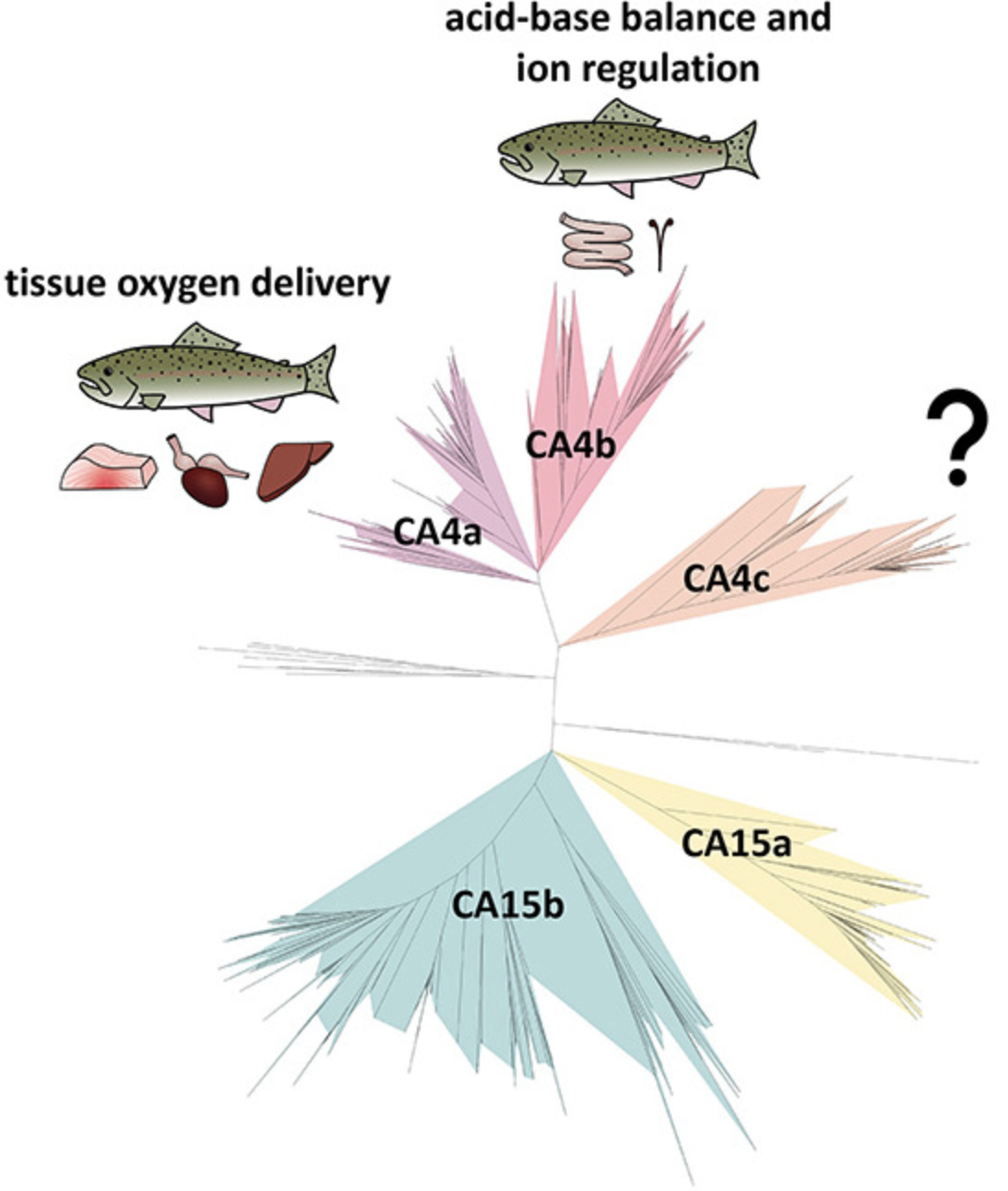
Abstract
The functional role of membrane-bound carbonic anhydrases (CAs) has been of keen interest in the past decade, and in particular, studies have linked CA in red muscle, heart, and eye to enhanced tissue oxygen extraction in bony fishes (teleosts). However, the number of purported membrane-bound CA isoforms in teleosts, combined with the imperfect system of CA isoform nomenclature, present roadblocks for ascribing physiological functions to particular CA isoforms across different teleost lineages. Here we developed an organizational framework for membrane-bound CAs in teleosts, providing the latest phylogenetic analysis of extant CA4 and CA4-like isoforms. Our data confirm that there are three distinct isoforms of CA4 (a, b, and c) that are conserved across major teleost lineages, with the exception of CA4c gene being lost in salmonids. Tissue distribution analyses suggest CA4a functions in oxygen delivery across teleost lineages, while CA4b may be specialized for renal acid-base balance and ion regulation. This work provides an important foundation for researchers to elucidate the functional significance of CA4 isoforms in fishes.